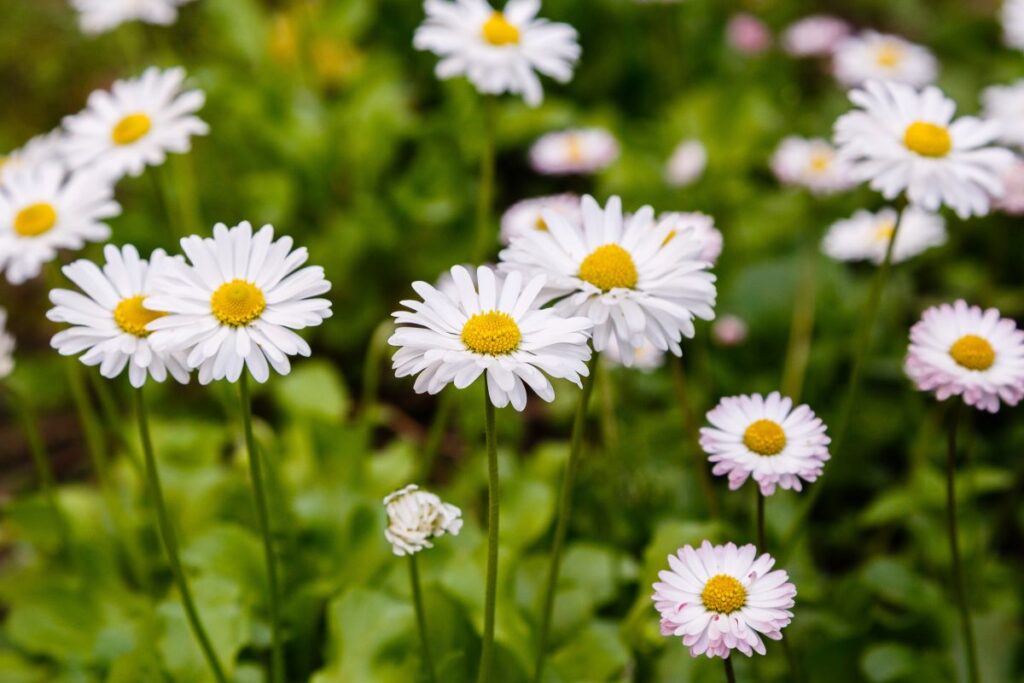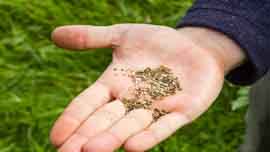The Secret to Norfolk Wildflowers: Locally Sourced Seeds for Success
Have you ever wondered how to get those gorgeous wildflower meadows and gardens bursting with colour that you see all around Norfolk? The secret is starting with locally sourced seeds. As any gardener knows, the key to success is using seeds and plants adapted to the local climate and conditions. Wildflowers native to Norfolk that have been grown from locally collected seeds for generations will thrive in your garden. They are already perfectly suited to the region’s soil, rainfall, temperatures, and daylight hours. Locally sourced wildflower seeds will germinate readily and produce hardy, low-maintenance plants. Their deep roots will withstand droughts and their natural resistance to disease will reduce the need for pesticides. Best of all, locally sourced wildflowers attract pollinators and wildlife native to Norfolk, bringing your garden to life.
Norfolk's Stunning Wildflower Meadows Beckon
Norfolk’s wildflower meadows are a sight to behold in spring and summer. Fields of poppies, cornflowers, oxeye daisies, and knapweed sway in the breeze, a vibrant sea of red, blue, yellow, and purple. These natural wonders are made possible thanks to the county’s unique geology and climate, along with the use of locally sourced seeds.
Norfolk’s soils are free-draining, low in nutrients, and alkaline—perfect conditions for wildflowers to thrive. Pair that with a temperate climate, and you have the ideal environment for wildflower propagation. Many rare species, like green-winged orchids and marsh helleborines, can be spotted in Norfolk’s meadows.
To establish your own wildflower haven, use seeds or plants native to East Anglia. Look for mixes containing cornflowers, poppies, daisies, knapweed, clover, and vetch. Locally-sourced seeds and plants are best adapted to the local climate and soil conditions, so they germinate and establish more readily. You’ll have a meadow bursting with blooms in no time.
Norfolk’s wildflower wonders highlight the importance of native flora. By sowing regional wildflower seeds in your garden, you can create habitats for wildlife and pollinators, preserve natural diversity, and ensure these floral gems survive and spread their beauty for generations to come. Discover nature’s art in Norfolk’s wild places and bring a little paradise back home. The secret is going native.
Top Wildflower Species Found in Norfolk
When it comes to wildflowers in Norfolk, you’ll want to source seeds locally. Many species found in the meadows and woodlands of Norfolk have adapted over time to thrive in the region’s climate and soil conditions. Using locally collected seeds gives you the best chance of success in establishing your own wildflower habitat.
Lorem ipsum dolor sit amet, consectetur adipiscing elit. Ut elit tellus, luctus nec ullamcorper mattis, pulvinar dapibus leo.
Some of the top wildflowers you’ll spot around Norfolk include:
- Oxeye daisy: A cheerful daisy with bright yellow centres and white petals. Grows up to 3 feet tall. Provides food for bees, butterflies, and other pollinators.
- Meadow buttercup: This plant has delicate yellow flowers with glossy petals. It is usually under 2 feet tall and is another important food source for pollinators that does well in damp soils.

- Red clover: Its pink puffball flowers are irresistible to bumblebees. It can reach up to 3 feet high and fixes nitrogen in the soil, enriching it for other plants.
- Bird’s-foot trefoil: Bright yellow flowers with red veins. Grows up to 2 feet tall. Yet another pollinator favourite that’s drought tolerant once established.
By using seeds collected from Norfolk’s wild spaces, you give these beautiful natives the best start in your own garden. With the right conditions, your wildflower meadow or patch will thrive and support local wildlife for generations. There’s no better way to capture the spirit of Norfolk’s countryside than by inviting it into your own backyard.
Sowing Wildflowers in Norfolk for Maximum Germination
To get the most out of your wildflower meadow in Norfolk, start with high-quality, locally sourced seeds. Seeds native to Norfolk and sourced from local wildflower farms will germinate at a higher rate and produce harder, more vibrant blooms.
Find a Reputable Seed Supplier
Do some research to find a reputable seed company that sources native Norfolk wildflower seeds. They should be able to tell you exactly where the seeds were collected. Locally collected seeds will be well-adapted to Norfolk’s climate and growing conditions. Wildahome works with farmers and landowners across Norfolk, to provide you with the best locally sourced Norfolk wildflower seeds.
Prepare the Site
Before sowing, prepare the site by clearing the area of weeds and turf. Rake the soil to create a fine, crumbly surface. Wildflower seeds need contact with the soil to germinate, so avoid leaving large clods of earth.
Sow in Autumn
The ideal time to sow wildflower seeds in Norfolk is autumn, from October through November. The cold winter temperatures help break the seeds dormancy, allowing them to germinate vigorously in spring. Sow the seeds by hand or with a spreader, aiming for even coverage across the site. For small areas, hand sowing will give you more control over seed density. Follow the recommended sowing rates on the seed packets.
Maintenance
Water the site regularly for the first few months, especially in dry weather. Once seedlings have established, mow the area in midsummer and remove the clippings. This will reduce competition from grasses and prevent the wildflowers from self-seeding. Avoid using fertilisers, which can reduce flowering.
With the right conditions and care, your locally-sourced wildflower seeds will produce a stunning, long-lasting wildflower meadow that supports Norfolk’s native plants and wildlife. By sourcing seeds native to your local area, you’ll be helping to conserve and promote Norfolk’s botanical heritage in your own garden.
Locally Sourced Seeds Are Key for Norfolk Gardens
Locally sourced wildflower seeds are key to establishing successful wildflower meadows and gardens in Norfolk. Native seeds that are grown and harvested in Norfolk are naturally adapted to the local climate and soil conditions. They will germinate and establish much more readily than commercial wildflower seed mixes from other parts of the UK or Europe.
- Norfolk native wildflowers are accustomed to the country’s weather patterns, rainfall, and temperatures. They are hardy and well-suited to survive Norfolk winters and thrive during the summer. Commercial seed mixes may contain species that struggle in Norfolk’s conditions and climate.
- Local wildflower seeds do not require a period of adaptation to their new environment. They can get right to growing vigorously. Non-native seeds first have to adjust to their new surroundings, delaying flowering and growth.
- Native pollinators, like bees, butterflies, and birds, prefer local wildflowers that they have co-evolved with. Exotic wildflowers may not attract the same diversity and numbers of pollinators. By sowing native seeds, you’ll create habitat and forage for Norfolk wildlife.

To establish an authentic wildflower meadow or garden in Norfolk, sourcing seeds from Wildahome or local growers and suppliers whenever possible. Our seeds are propagated from Norfolk native wildflower populations, ensuring you get the most suitable mix for your location. For the best results, choose a mix that contains species like oxeye daisy, red clover, cowslip, birdsfoot trefoil, and common knapweed.
By sowing locally sourced native seeds, your wildflower planting has the best chance of becoming well-established, low-maintenance, and a haven for local wildlife. The native plants and flowers that sprout will create a beautiful, natural paradise right in your own corner of Norfolk.
Creating a Wildflower Meadow in Your Norfolk Garden
Creating a wildflower meadow in your Norfolk Garden is rewarding and helps support local wildlife. The key is starting with high-quality, locally sourced seeds adapted to Norfolk’s climate.
Preparing the Site
Prepare your site in autumn or early spring. Remove any existing grass and weeds. Rake the soil to create a fine, crumbly texture. Norfolk wildflowers prefer poor, low-nutrient soil, so avoid adding compost or fertilizer.
Sowing and Maintaining
In spring, broadcast the seeds over your site and rake in lightly. Keep the area moist while germination occurs. Once seedlings are a few inches tall, mow the area to about 6 inches. This will encourage bushy growth.
Mow once a year in autumn and remove the clippings. Do not mow in the first year. In subsequent years, mow in early spring before growth starts and again in autumn after most species have seeded.
With the right conditions and locally adapted seeds, your wildflower meadow should become well-established within 3 years. Enjoy the beauty and wildlife in your own Norfolk oasis! Using native seeds gives your wildflowers the best chance to thrive, allowing you to recreate Norfolk’s natural beauty in your own garden.
How to Create Your Own Stunning Wildflower Meadow with Locally Sourced Seeds
So there you have it—the not-so-secret secrets behind Norfolk’s gorgeous wildflower displays. By using locally sourced seeds adapted to the region, these wildflower meadows are able to thrive and spread their vibrant colours each season. Now that you’re in on the insider information, you can start your own wildflower patch at home. Pick up some native seeds, find a spot in your yard with plenty of sun, and get sowing. With the right conditions and a bit of patience, you’ll be enjoying a sea of pinks, purples, and yellows in no time. And don’t forget to save some of those seeds to share with friends – the more wildflowers, the merrier! By growing native blooms, you’re helping to keep Norfolk’s natural beauty alive for generations to come.

Wildahome: Reviving Norfolk's Natural Beauty with Locally Sourced Wildflower Seeds
Wildahome stands as a premier choice for gardeners and conservationists seeking to foster local biodiversity through the use of indigenous plant species. By choosing Wildahome’s locally sourced Norfolk wildflower seeds and seed mats, you’re not just planting flowers; you’re restoring a piece of the natural heritage unique to the region. These seeds are gathered from established wild populations across Norfolk, ensuring they are perfectly adapted to the local climate and soil conditions. This adaptation promotes higher germination rates and more robust plant growth, leading to vibrant, self-sustaining wildflower displays that require minimal upkeep.
Moreover, cultivating these native varieties helps support local wildlife, including bees, butterflies, and birds, which rely on familiar flora for nutrition and habitat. By integrating Wildahome’s seeds into your garden, you contribute to the ecological health of your community, enhancing the scenic landscapes of Norfolk while preserving its ecological history. Your efforts in using these seeds help ensure that the stunning vistas of wildflowers continue to be a defining feature of the region for future generations.


